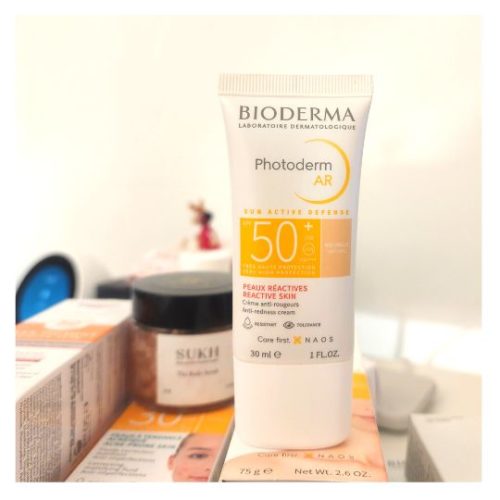This is a product review of Bioderma’s Photoderm AR SPF50+ sunscreen that has a tint and is for folks with “reactive skin” (whatever that means).
There is a photo of a woman with red cheeks, so I guess that’s what they mean. (May be rosacea?)
Damages caused by UVA radiation
A brief reminder of how important UVA filters are in a sunscreen, because most damage is done by UVA radiation.
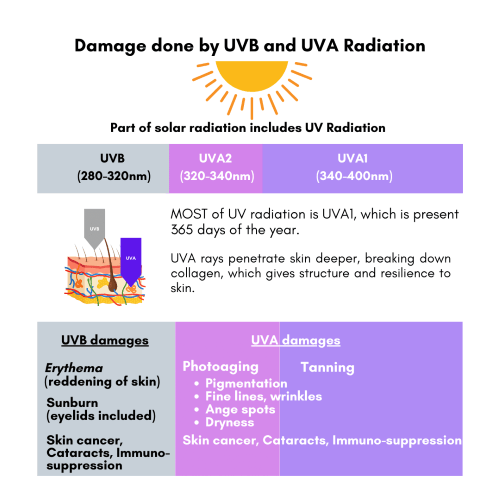
Look and feel of sunscreen
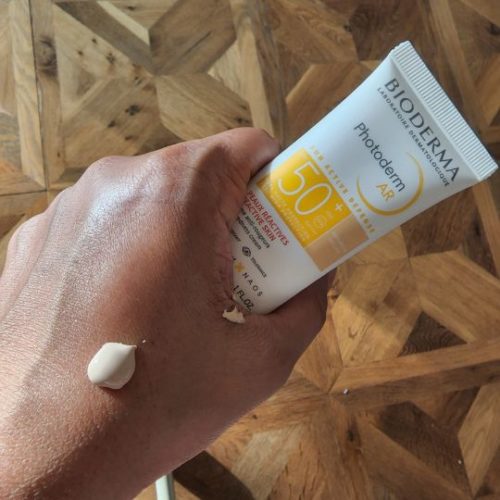
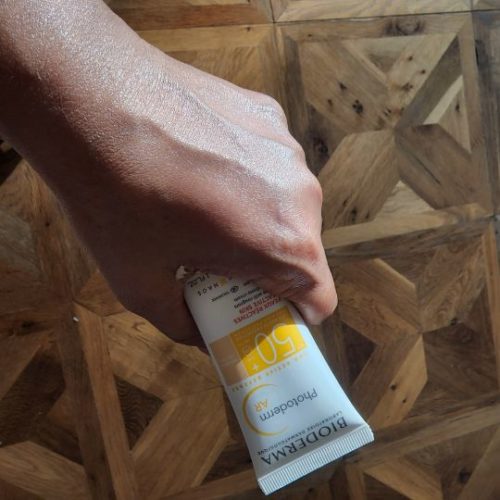
Key points are:
- Blends in with no whitecast
- Doesn’t sting eyes, so easy to apply to under and eye lid area
- Formulation is hydrating and moisturizing (so no need for additional moisturizer)
- Feels heavier than other Bioderma sunscreens that I have tested so far, which probably explains why the 30ml container is much smaller than other tubes
- Not irritating at all
Happy Skin Days’ test
Passes my simple test
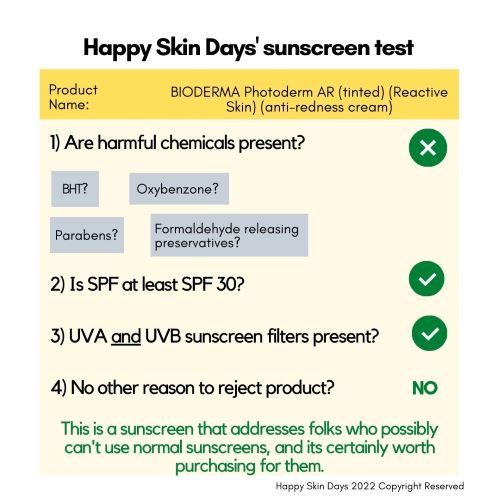
***Geek details***
The harmful chemicals I look for are BHT, Oxybenzone, Formaldehyde releasing preservatives and these are absent.
The Filters present and their position in the Ingredient list are as follows:
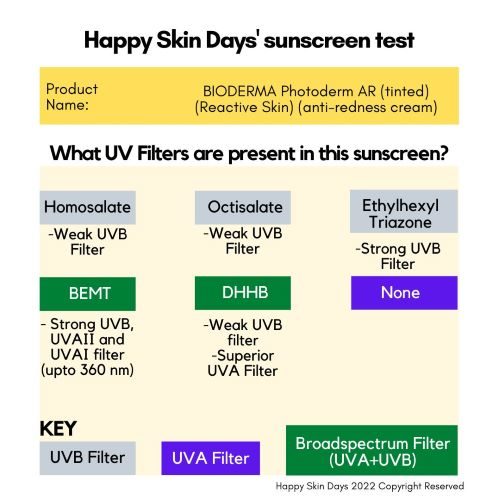
UVB protection is provided by a combination of Homosalate, Octistalate and Ethylhexyl Triazone. The high SPF comes from Ethylhexyl Triazone that:
- Is photostable
- Can be present in small quantities and still give excellent UVB protection
- Is large in molecular size and therefore, no skin absorption.
Note that when multiple filters are present like this, the sunscreen is relying on synergy between multiple filters (yes, that’s a thing) to up the UVB protection.
What’s Bioderma’s UVA protection?
No mainstream UVA filter is present.
There are only two: Avobenzone (can be irritating) and Zinc Oxide (which is never used except with Titanium Dioxide).
Bioderma are using 2 broadspectrum filters: DHHB and BEMT
Both have following characteristics:
- Broadspectrum (so cover UVB and UVA regions)
- Are large molecules, so no skin absorption
- Photostable, so don’t break down as soon as they come out a tube.
- Effective even at low %
BEMT provides superior UVB protection and its UVAI protection starts to taper-off at about 360nm.
DHHB provides superior UVAII and UVAI protection upto 360nm.
